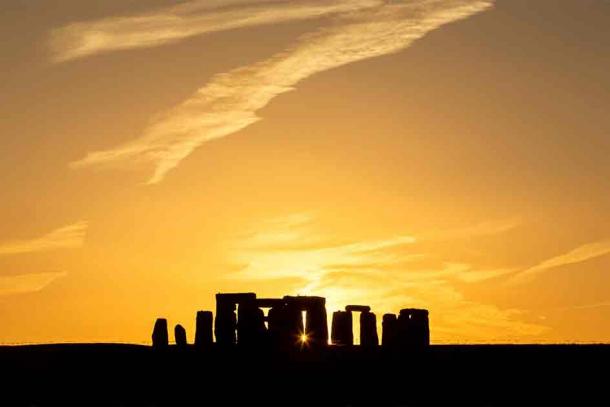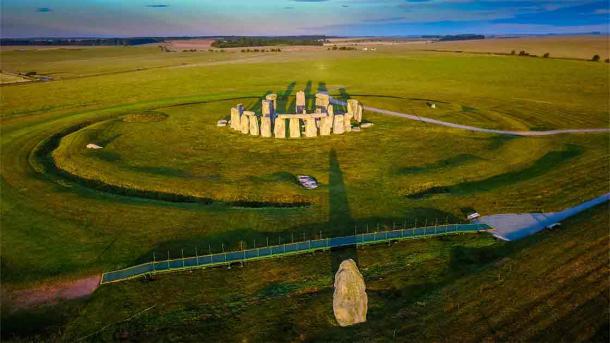
Stonehenge May be Aligned with the Moon
A team of experts and organizations, including the Royal Astronomical Society, think they have found something unexpected. After careful research they have announced the possibility that Stonehenge's alignment might not only correspond with the Sun but also with the Moon.
Archaeoastronomers in Britain are investigating the relationship between the ancient monument and a rare astronomical event known as a 'major lunar standstill,' occurring approximately every 18.6 years. This phenomenon marks the points where Moonrise and Moonset reach their farthest positions along the horizon.
And it looks like they have found a correlation.
A Relationship of Celestial Proportions
Historians have long understood that Stonehenge, the iconic prehistoric circle of standing stones in England, was meticulously constructed with the movements of the sun in mind. Every solstice, crowds gather to witness the sun aligning with the monumental stones.
- The Stonehenge Calendar: A Prehistoric Approach to Time’s Passing
- Disrupting Dogmatic History - Stonehenge Wasn’t a Calendar!

The summer solstice at Stonehenge (Phil / Adobe Stock)
Recent research spearheaded by experts from English Heritage, the Royal Astronomical Society, and several English universities now suggests that the builders of Stonehenge might have also been attuned to the Moon, reports The Royal Astronomical Society.
“Stonehenge’s architectural connection to the Sun is well known, but its link with the Moon is less well understood,” says Clive Ruggles, an archaeoastronomer at the University of Leicester, in a statement from English Heritage. Stonehenge’s original four Station Stones—small boulders that formed a rectangle around the structure —“align with the Moon’s extreme positions,” he adds. “Researchers have debated for years whether this was deliberate, and if so, how this was achieved, and what might have been its purpose.”
The next major lunar standstill is slated to occur from this year into the following. Researchers from Oxford, Leicester, and Bournemouth universities speculate that these infrequent lunar movements may have been observed during the early construction of Stonehenge, potentially influencing its later design. The investigation into this theory is set to commence this spring and will extend until mid-2025.
The major lunar standstill phenomenon occurs when the Moon's rise and set are at their maximum distance from each other along the horizon and takes place only once every 18.6 years. The upcoming major lunar standstill is set to commence this year and extend until 2025.

The opportunity to test the theorized alignment of Stonehenge with the Moon will be available later in 2024 (Nicholas / Adobe Stock)
Given that Stonehenge's creators were deeply attuned to celestial phenomena, it's logical that they would have regarded a major lunar standstill with great importance. The Moon's illumination likely aided in nocturnal activities such as hunting, while its cyclical patterns served as a natural calendar, facilitating the organization of events and celebrations, reports The Conversation.
During a major standstill, the moon grazes portions of the horizon beyond the reach of the Sun—an occurrence that experts believe would have held profound significance for cultures observing the trajectories of celestial bodies.
As BBC News’s Sophie Parker writes, “The theory is that these lunar movements might have been noticed in the early phase of Stonehenge and gone on to influence its later design.”
A Marvel of Ancient Architectural Ingenuity
The first circles were erected at Stonehenge over 5,000 years ago, and the site itself was formed over more than a millennium. Today it stands as a testament to ancient architectural ingenuity.
Comprised of concentric circles of enormous standing stones, it holds the distinction of being "the most architecturally sophisticated and only surviving lintelled stone circle in the world," according to English Heritage.
The consensus among most historians is that the builders deliberately oriented the stone circle to synchronize with the movements of the Sun, a cornerstone of their belief system, and utilized the site for burial rites.
Recent research suggests that during the earliest phase of Stonehenge's construction, at least one major lunar standstill occurred, potentially leaving its mark on the monument's design and purpose, as noted by English Heritage. The elongated sides of the Station Stones' rectangle are positioned to align with "the southernmost moonrise at the major standstill."
Moreover, evidence indicates that between 2500 and 3000 BC, in the centuries preceding the installation of the larger stones, cremated remains were interred in a concentrated area in the southeastern sector of the site, facing "the most southerly rising position of the Moon."
Professor Clive Ruggles, emeritus professor of archaeoastronomy at Leicester University, concluded, “Stonehenge’s architectural connection to the Sun is well known, but its link with the Moon is less well understood. The four Station Stones align with the Moon's extreme positions, and researchers have debated for years whether this was deliberate, and - if so - how this was achieved and what might have been its purpose.”
Top image: Stonehenge may map the changing seasons through following the Sun, but does it align with the Moon as well? Source: Magann / Adobe Stock.
By Sahir Pandey
References
Anderson, S. 2024. Were Stonehenge’s Builders Guided by the Moon? Available at: https://www.smithsonianmag.com/smart-news/was-the-construction-of-stonehenge-guided-by-the-moon-180984167/
Milligan, M. 2024. Moon may have influenced Stonehenge construction. Available at: https://www.heritagedaily.com/2024/04/moon-may-have-influenced-stonehenge-construction/151629
Morris, S. 2024. Rare lunar event to shed light on Stonehenge’s links to the moon. Available at: https://www.theguardian.com/uk-news/2024/apr/15/once-in-a-generation-lunar-event-to-shed-light-on-stonehenges-links-to-the-moon
Parker, S. 2024. Stonehenge research explores possible Moon connection. Available at: https://www.bbc.com/news/articles/c80zexkvenko
Silva, F. 2024. Stonehenge may have aligned with the Moon as well as the Sun. Available at: https://theconversation.com/stonehenge-may-have-aligned-with-the-moon-as-well-as-the-sun-228133















